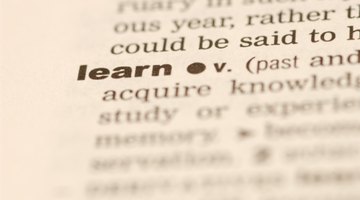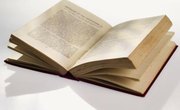When it comes to learning and analyzing a language, especially a new language, a good place to start is by studying the different parts of speech. Most languages in the world can be broken down into eight parts of speech, but English can sometimes have 10 parts of speech, depending on who you ask. Knowing the parts of speech can help people to understand how words come together to form sentences and how sentences are strung together to create speech. Although it's likely that most students are already familiar with these parts of grammar, it never hurts to have a bit of a refresher.
About the 10 Parts of Speech
Before explaining the 10 parts of speech, it's important to understand that most organizations today consider there only to be eight parts of speech and in some cases, nine parts of speech. Both articles and determiners/quantifiers are the two parts of grammar that may sometimes be left out.
1. Noun: Person, Place or Thing
You may be wondering which words are nouns? A noun is defined as a person, place, thing or idea. Proper nouns, which are specific nouns that a person knows (such as the name of a restaurant), always begin with a capital letter. Common nouns, which are general words, such as "cars," are not capitalized.
2. Pronoun: In Place of a Noun
A pronoun is a word that can be used in place of a noun, typically after the noun itself has already been stated. The pronouns are "I, You, He, She, It, We, They." An example of this in speech is, "James likes to eat pizza, but he prefers pepperoni." In this case, "he" is the pronoun because it is being used in place of the noun which is "James."
3. Verb: An Action Word
A verb is one of the 10 parts of speech that can be confusing for language learners because it needs to be conjugated based on the tense and the pronoun. A verb is an action word or "doing" word that signifies movement in some way. Some examples of verbs are "run," "jump," "eat," "kiss," "study" etc.
4. Adjective: Describes a Noun
An adjective is a word that's used to describe a specific noun and to provide more detail to the listener. It's one of the essential parts of grammar, otherwise language would be dull and boring and it would be difficult to identify things. For instance, instead of saying "The car," the speaker can say, "The red car." In this case, "red" is the adjective, because it tells the listener what the car looks like.
5. Article: Type of Adjective*
An article is another type of adjective that may not be considered a part of speech by some but can be sometimes be counted towards the 10 parts of speech, at least in English. This is likely because not all languages have articles. An article is either the word "a" "an" or "the" and is used to give more information about a common noun. Is that red car a car you recognize (your mom's car), or is it a random red car driving on the highway? If so, you can either say "The red car" if you recognize it or "A red car" if you don't recognize it. "An" is used before a noun that begins with a vowel sound, like "octopus" or "hour."
6. Determiner/Quantifier States How Many*
A determiner or quantifier is another one of the 10 parts of speech that's not always counted because it can also be considered an adjective. Additionally, articles can sometimes be considered determiners as well, which is why both articles and determiners are usually left out of the eight parts of speech. A determiner or quantifier is used to state how many or how much of a noun there is. For instance, in the sentence "There are many children at the playground" the word "many" is the determiner.
7. Adverb: Describes a Verb
An adverb is yet another type of adjective that's used to describe a verb, but it can also describe an adjective or another adverb. Sometimes, an adverb ends in "ly" but not always. An adverb can also be words like "very" and "too." If you're unsure as to whether or not a word is considered an adverb, check to see if it answers the question "How?" For example, in the sentence, "Madison frantically did her homework" ask yourself, "How did Madison do her homework?" Frantically.
8. Conjunction: Used to Connect Sentences
A conjunction is a word like "if" "but" or "and" which is used to connect sentences or clauses together. For example, if you have two sentences like "I am hungry" and "I am angry," you can join these together with the conjunction "and." Now, the sentence is, "I am hungry and angry."
9. Preposition: Used to State Location
A preposition is one of the most exciting parts of grammar for children to learn because they can have a lot of fun with it. Because a preposition is used to describe the location of something in relation to something else, such as "under" "beside" or "next to" children can use their bodies or objects to represent prepositions or prepositional phrases.
10. Interjection: Used to Express Emotion
An interjection is used to express emotion in a sentence. It could be a word like "Woah!" or "Oops!" Instead of saying something like, "The boy was surprised," you could use an interjection to instead say_"'Wow!' Said the boy in surprise."_
Related Articles
References
Writer Bio
Hana LaRock is a freelance content writer from New York, currently living in Mexico. Before becoming a writer, Hana worked as a teacher for several years in the U.S. and around the world. She has her teaching certification in Elementary Education and Special Education, as well as a TESOL certification. Please visit her website, www.hanalarockwriting.com, to learn more.











